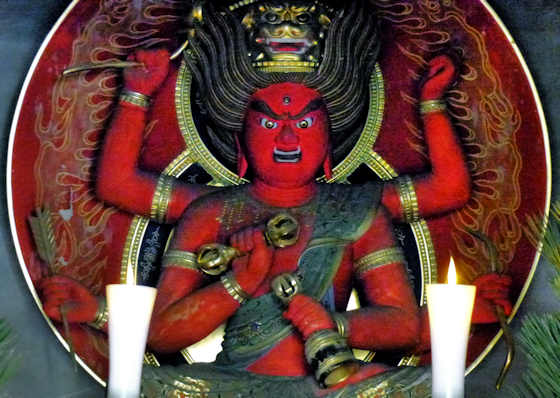Monday, April 24, 2023
Around Gokurakuojoin at Nomiyama Kannonji
Labels:
aizen,
enma,
Fudo Myojin,
jizo,
kannon,
mizuko jizo,
sasaguri
Saturday, April 22, 2023
Kantele Ogimachi Square Osaka
Labels:
Architecture,
kinkifudo,
Museum,
Osaka
Friday, April 21, 2023
Tokei Shrine Tanabe World Heritage Site
Tokei Shrine Tanabe World Heritage Site
Tokei Shrine is the main shrine of Tanabe, Wakayama, known as the gateway to the Kumano Kodo.
The famed warrior-monk Benkei, known primarily as the sidekick of Yoshitsune, was born in Tanabe and a statue in the shrine depicts him with his father and some chickens.
I arrived here at the end of my 4th day walking the Saigoku Pilgrimage. The previous post in the series was Takahara to Takajirioji on the Nakahechi.
Labels:
benkei,
camphor,
ema,
kumano kodo,
sacred tree,
saigoku,
Shrine,
torii
Thursday, April 20, 2023
Kankakei Gorge Ropeway Shodoshima
The view from the top of Kankakei Gorge, which is located roughly in the middle of Shodoshima Island.
Labels:
gorge,
ropeway,
shodo88,
shodoshima
Tuesday, April 18, 2023
Chiyo Inari Shrine Tsuyama
Chiyo Inari Shrine Tsuyama
The roosters on the ema suggest they have been hanging there for nine years.
As is common at Inari shrines, there are a lot of smaller, Inari shrines in the grounds.
I visited on the 4th day of my walk along the Chugoku Kannon Pilgrimage and the previous post in the series is Tsuyama Castle.
Sunday, April 16, 2023
Mount Nosokodake Ishigaki
Mount Nosokodake Ishigaki
Labels:
ishigaki,
mountaintop,
okinawa
Subscribe to:
Posts (Atom)






























































